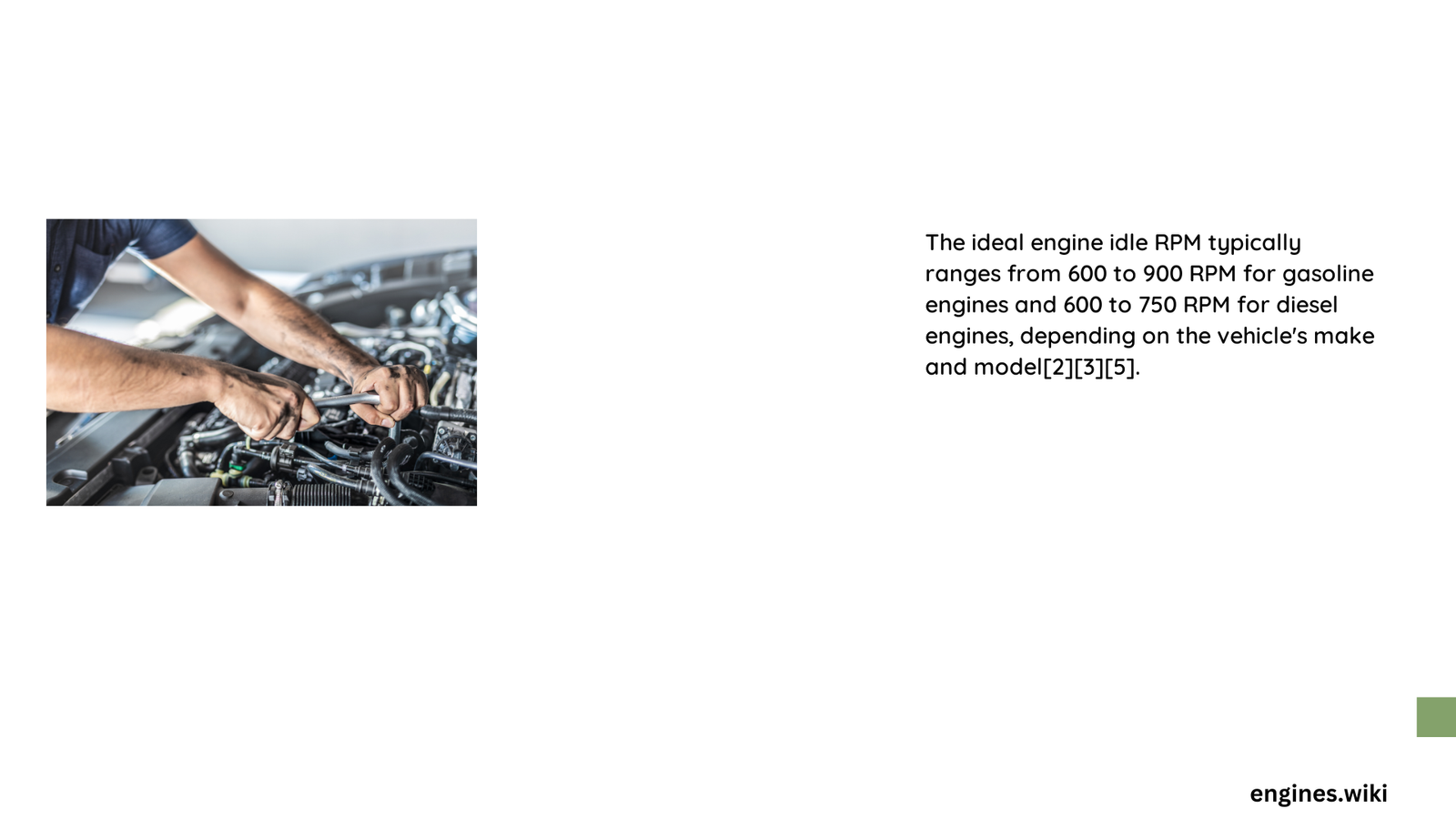Engine idle RPM is a critical aspect of vehicle performance, directly impacting fuel efficiency, engine wear, and overall mechanical health. Understanding the optimal idle speed range helps drivers maintain their vehicles effectively, with most gasoline and diesel engines typically idling between 700 to 1,000 RPM, depending on specific vehicle design, engine type, and manufacturer specifications.
What Determines the Correct Engine Idle RPM?
How Do Gasoline Engines Idle?
Gasoline engines generally maintain a stable idle between 700 and 1,000 RPM. This range ensures:
- Smooth engine operation
- Preventing stalling
- Adequate power for electrical systems
- Proper functioning of accessories like air conditioning
Factors Influencing Gasoline Engine Idle
| Factor | Impact on Idle RPM |
|---|---|
| Engine Temperature | Lower temperatures might require slightly higher idle |
| Electrical Load | Additional accessories can increase idle speed |
| Altitude | Higher elevations may affect idle characteristics |
How Do Diesel Engines Differ in Idle Performance?
Diesel engines share similar idle characteristics but with nuanced differences:
- Typical idle range: 650 to 1,000 RPM
- Some models like MaxxForce engines have a fixed 700 RPM low idle
- Older Mercedes diesel models often idle around 700-750 RPM
What Tools Help Measure and Adjust Idle RPM?
Professionals and enthusiasts use several tools to diagnose and adjust idle speed:
- Digital Tachometer
- Provides precise RPM measurements
-
Helps identify deviations from recommended ranges
-
Idle Air Control (IAC) Valve
- Allows fine-tuning of air bypass
-
Critical for fuel-injected vehicles
-
Electronic Control Module (ECM)
- Enables computerized idle speed adjustments
- Provides more precise control in modern vehicles
What Are the Consequences of Incorrect Idle RPM?
Performance Implications
- High Idle RPM
- Increased fuel consumption
- Accelerated engine wear
-
Higher emissions
-
Low Idle RPM
- Risk of engine stalling
- Insufficient electrical system charging
- Potential battery drainage
How Can Drivers Maintain Optimal Idle Performance?
Recommended maintenance practices include:
- Regular engine tune-ups
- Cleaning idle air control valve
- Checking for vacuum leaks
- Monitoring engine sensors
- Using high-quality fuel
Expert Recommendations

For most vehicles, maintaining an idle between 700-1,000 RPM provides the best balance of performance and efficiency. However, always consult your vehicle’s specific manual for precise recommendations.
Pro Tips
- Avoid prolonged idling
- Warm up engines gradually
- Listen for unusual sounds during idle
- Use diagnostic tools for periodic checks
Technical Insights
Modern engine management systems continuously adjust idle speed based on:
– Coolant temperature
– Electrical load
– Ambient conditions
– Engine wear status
Manufacturer-Specific Idle Characteristics
| Manufacturer | Typical Idle RPM Range |
|---|---|
| Cummins | 800-1,000 RPM |
| BMW | 700-900 RPM |
| International MaxxForce | 700 RPM (Low Idle) |
Conclusion
Understanding what RPM your engine should idle at is crucial for maintaining vehicle health, performance, and longevity. While general guidelines exist, always prioritize manufacturer-specific recommendations and professional diagnostics.
